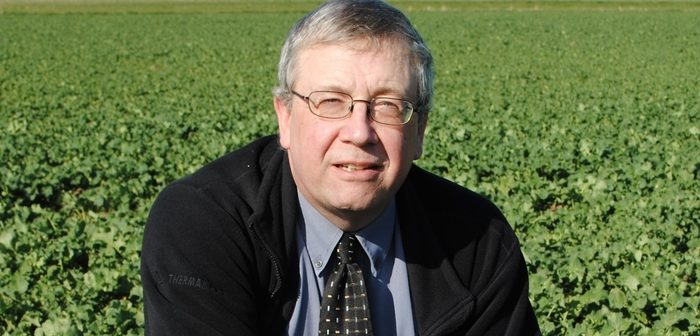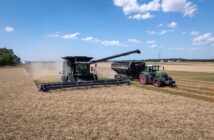Early disease pressure in oilseed rape is much lower than last year due to dry conditions during August and early September, but variable growth will complicate autumn spray decisions, leading agronomy firm Hutchinsons says.
By the end of September, early-sown forward crops in many areas had reached the fourth true leaf stage, while the most backward crops were only just emerging.
“The differences in this region are largely moisture related,” says Hutchinsons agronomist Robert Barker in Yorkshire.
“There are some crops on the Wolds that didn’t receive rain early in the season and then also got hit by flea beetle, so really struggled to get going. Equally, we’ve got other crops in areas that caught rain showers after drilling or were direct drilled to conserve moisture that established well and look much better.
“It’s a very variable picture, but at least disease pressure is generally pretty low.”
There is a similar picture elsewhere in the country, according to Hutchinsons technical development director Dr David Ellerton.
“Last year we’d already seen plenty of Phoma incidence in crops by late-September and early October, whereas disease pressure so far in most places has been much lower.”
However, given recent heavy rain and very variable growth stages, disease risk must be closely monitored and fungicide programmes carefully tailored to in-field risk, variety susceptibility and growth stage, he says.
Single versus two-spray strategy
With later disease development than last year, some growers may well be able to use a single well-timed fungicide spray to protect crops from Phoma and light leaf spot through the winter.
“Generally speaking, the optimum time for a single spray is late October or early November, however accurate timing is everything,” Dr Ellerton says.
“If you spray too early, fungicide activity may run out of steam if Phoma comes in late. In contrast, you can’t afford to delay too long and risk disease getting established in the crop.”
Forward (i.e. 6-8 leaves by mid-October) crops in wetter parts of the country may still be at higher disease risk and benefit from an earlier spray if the treatment threshold of 10-20% of plants infected is reached, followed by another spray three to four weeks later.
In smaller plants Phoma infection can potentially reach the stems more quickly, so he recommends a lower treatment threshold of 10% infection.
Priority should also be given to susceptible varieties, such as Nikita, Mentor, Flamingo, Elevation, Kielder, Broadway, SY Harnas and V3240L, which are all more at risk from canker.
“There’s no one-size-fits-all answer.”
For Mr Barker, light leaf spot is the main driver for autumn fungicides, although it is generally well controlled with a single spray in early November, he says.
“But we are seeing light leaf spot risk develop from mid-October onwards, so it’s best to monitor crops closely and use the industry risk forecasts to judge the optimum time to spray.
“The same applies for Phoma, where we have to react to what’s there. At the moment risk is quite low, but if pressure increases, it may be worth going with a holding spray of either straight prothioconazole or prothioconazole + tebuconazole.”
Dr Ellerton says prothioconazole-based fungicides are the most effective against phoma and light leaf spot.
Including tebuconazole in formulations can be more cost-effective than straight prothioconazole and also delivers useful growth regulatory effects. Product choice should be tailored to the amount of active ingredient in the mix and the level of growth regulation required, he says.
Other products based on actives such as difenoconazole or metconzole offer an alternative in certain situations, but generally lack the all-round disease control of prothioconazole, he notes.
While the fungicide response of some oilseed rape varieties may not always be obvious, Dr Ellerton points out that there was an average yield benefit over untreated of 0.32t/ha across all sites and varieties at Hutchinsons Regional Technology Centres in 2017/18 (0.75t/ha the previous year).
But there are big variations between varieties, with the highest response of more than 1.3t/ha, worth more than £400/ha at current prices.
Autumn fungicide advice
- Phoma and light leaf spot are top priorities
- Disease risk is lower than 2017, but…
- Monitor crops closely and use risk forecasts to determine treatment requirement
- Variable growth stages complicate spray decisions
- For Phoma, treat when 10-20% of plants are infected (10% in small plants and susceptible varieties)
- Optimum timing for single spray is end Oct/ early-Nov, but consider earlier spray if necessary
Prioritise small plants and susceptible varieties.




